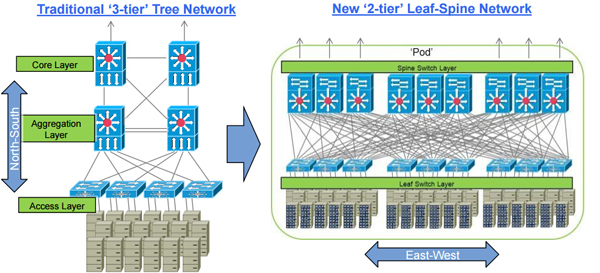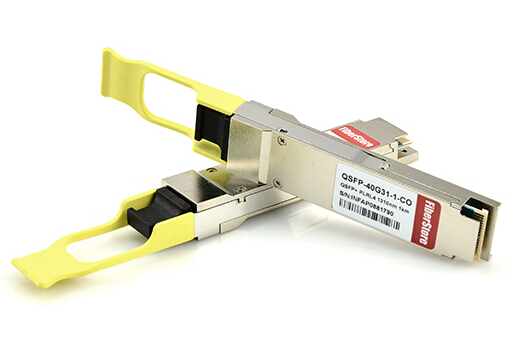40G and 100G are in full swing this year. All the topics, news and product solutions are around 40G/100G, especially the pluggable optics, including transceivers, Copper DACs (Direct Attach Cables) and AOCs (Active Optical Cables). In data center optics market, 40G optics are ubiquitous and 100G optics are accelerating.
Changes of Data Center Architectures and Connections
Data center is changing both in architectures and connections. Thus, products need upgrade to meet these changes.
Architecture Changes
Data centers are becoming larger, more modular and more homogenous. Networks migrate from traditional 3-tier to flattened 2-tier topology. Workloads spread across 10s, 100s, sometimes 1000s VMs and hosts. Driven by applications like Twitter, Facebook and Youtube, higher degree of east-west traffic across networks are required.

Connection Changes
Data center connections are moving from 1G and 10G, to 40G and 100G.
Within the data center rack—10G is being deployed and 25G is being standardized now. Thus, 40G and 50G may both be the next step.
Between data center racks—40G is being deployed now and 100G deployment will follow. So, the following step may be 200G or 400G.
Between data center buildings and WAN (Wide Area Network)—For long spans, 100G is being deployed and 400G is being standardized now. The following solution is expected as 800G, 1TE or 1.6TE.
40G and 100G Pluggable Optics in the Data Center
40G vs. 100G Within the Data Center
The most direct difference of 40G and 100G optics is the data rate. But actually, 40G and 100G optics have their own merits.
Characteristic of 40G Pluggable Optics
- Lowest cost per bit
- MMF reaches up to 300 m
- Breaks out to 4 x 10G
Characteristic of 100G Pluggable Optics
- Highest density per bit
- Lowest power consumption/bit
- MMF reaches up to 100m for now
- Breaks out to 4 x 25GE
40G & 100G Pluggable Optics Overview
In today’s market, 40G products mainly include 40GBASE-SR4 and 40GBASE-LR4 QSFP+ modules and 40G AOCs. QSFP+ supports both 40G links between racks and high-density 10G links within the rack, especially the 40G QSFP+ breakout AOC which is an ideal solution for 40G migration.

100G is ready here. Tens of thousands of 100G Ethernet links deployed in core routers and carrier switches. Vast majority are CFP modules and CFP2 deployments are now starting. In addition,100G is rapidly expanding. For instance, new optical standards for the data center (100G SR4, CWDM4, PSM4) and new higher density 100G module form factors like CFP4 and QSFP28 are on the way. High port-count 100G switches are being designed and many 100G modules will be used to support high-density 10G and 25G. It is said that 100G and 4x 25G deployments are expected to grow substantially starting in 2015. 100G products mainly include 100GBASE-SR10 and 100G LR4 CFP/CFP2/CFP4 and 120G AOCs. Additionally, QSFP28 as the 100G module form factor of choice for new data center switches is also launched.

Conclusion
Large growth in web content and applications is driving such as growth in bandwidth and changes in data center traffic as well as growth in number of optical links. 40G/100G transceivers development supports this growth with smaller module form factors for higher port density, lower power consumption per bit and lower cost per bit. Meanwhile, new link speeds like 25G, 50G, 200G and 400G are being standardized. The pluggable optics will continue to develop to further satisfy the data center requirement. Let’s look forward to it!





